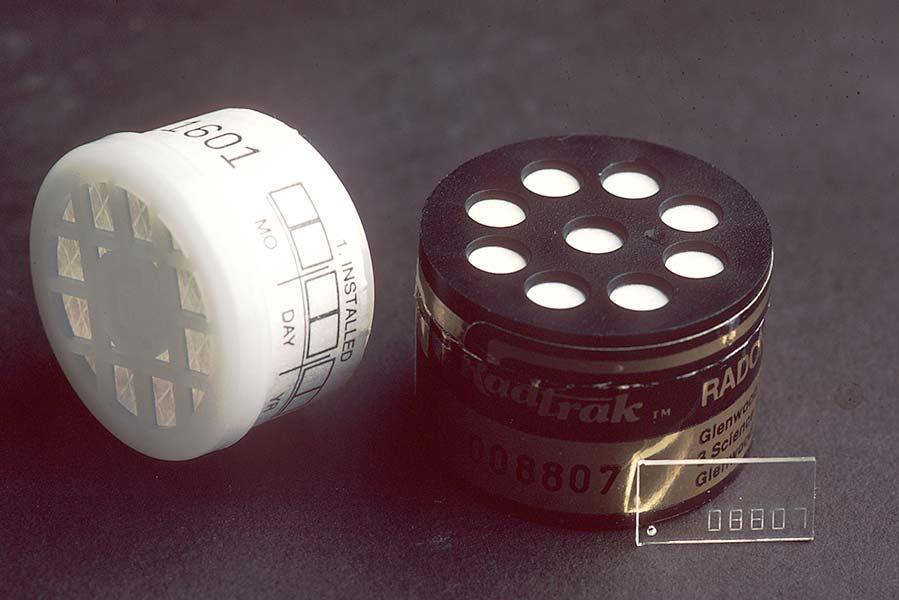What is radon?
Radon is a radioactive gas that is released from the normal decay of the elements uranium, thorium, and radium in rocks and soil. The invisible, odorless gas seeps up through the ground and diffuses into the air. In a few areas, depending on local geology, radon dissolves into ground water and can be released into the air when the water is used. Radon gas usually exists at very low levels outdoors, but the gas can accumulate in areas without adequate ventilation, such as underground mines.
How are people exposed to radon?
Radon is present in nearly all air, so everyone breathes in radon every day, usually at very low levels. Radon can enter homes through cracks in floors, walls, or foundations, and collect indoors. It can also be released from building materials or from water obtained from wells that contain radon. Radon levels may be higher in homes that are well insulated, tightly sealed, and/or built on soil rich in the elements uranium, thorium, and radium. Basements and first floors typically have the highest radon levels because of their closeness to the ground.
Workers employed in uranium, hard rock, and phosphate mining potentially are exposed to radon at high concentrations. Uranium miners generally are believed to have the highest exposures.
Which cancers are associated with exposure to radon?
Radon was identified as a health problem when scientists noted that underground uranium miners who were exposed to it died of lung cancer at high rates. Experimental studies in animals confirmed the results of the miner studies by showing higher rates of lung tumors among rodents exposed to high levels of radon. There has been a suggestion of an increased risk of leukemia associated with radon exposure in adults and children; the evidence, however, is not conclusive.
How can exposures be reduced?
Check the radon levels in your home regularly. The U.S. Environmental Protection Agency has more information about residential radon exposure and what people can do about it in its Consumer’s Guide to Radon Reduction: How to Fix Your Home.
Selected References:
- International Agency for Research on Cancer. Man-Made Mineral Fibres and Radon, IARC Monographs on the Evaluation of Carcinogenic Risks to Humans, Volume 43. Lyon, France: World Health Organization, 1988. Also available online. Last accessed June 6, 2023.
- National Toxicology Program. Ionizing Radiation, Report on Carcinogens, Fifteenth Edition. Triangle Park, NC: National Institute of Environmental Health and Safety, 2021. Also available online. Last accessed June 6, 2023.
- U.S. Environmental Protection Agency. A Citizen's Guide to Radon: The Guide to Protecting Yourself and Your Family from Radon. Washington, DC: U.S. Environmental Protection Agency, 2016. Available online. Last accessed June 6, 2023.
- World Health Organization. WHO Handbook on Indoor Radon: A Public Health Perspective. Geneva, Switzerland: World Health Organization, 2009. Also available online. Last accessed June 6, 2023.
